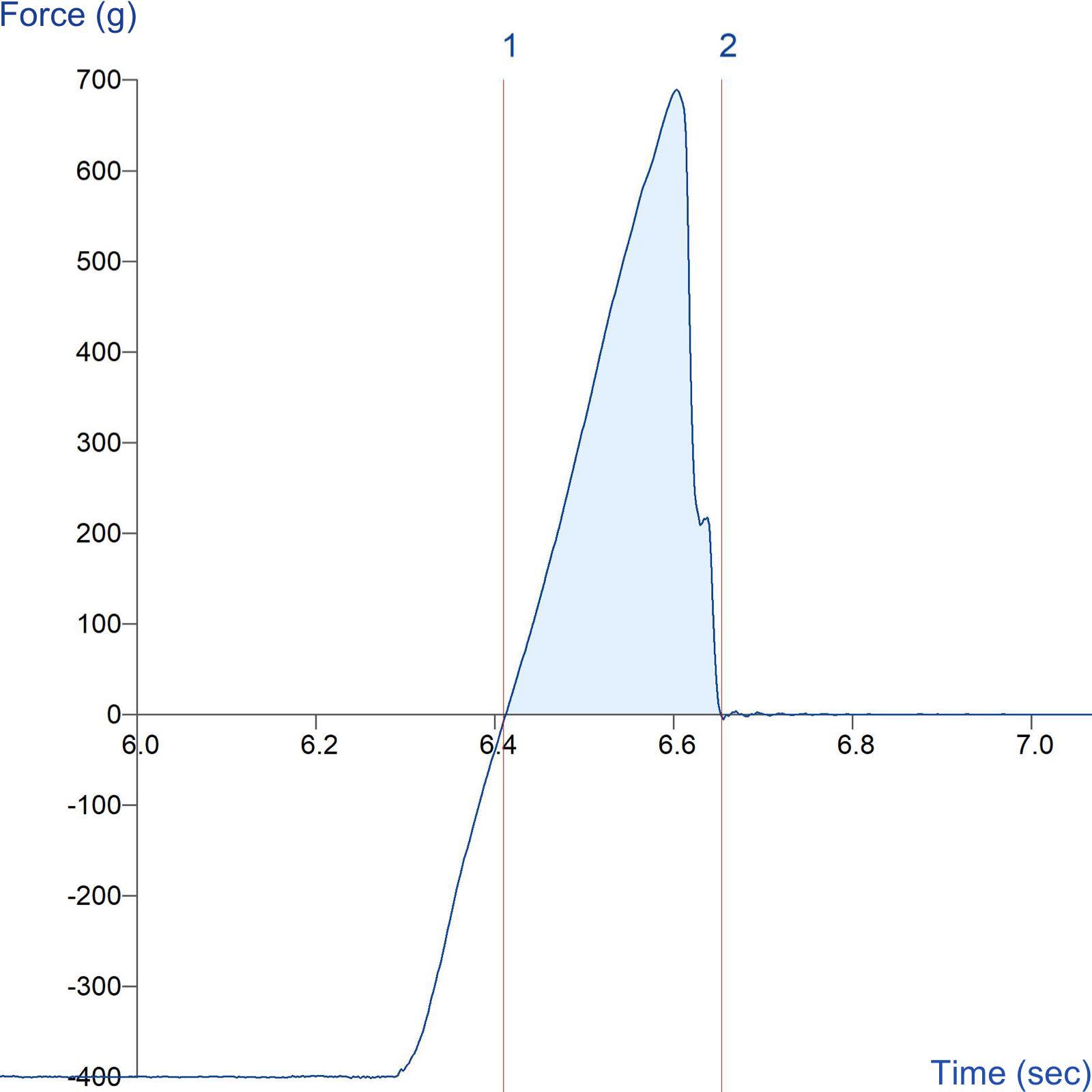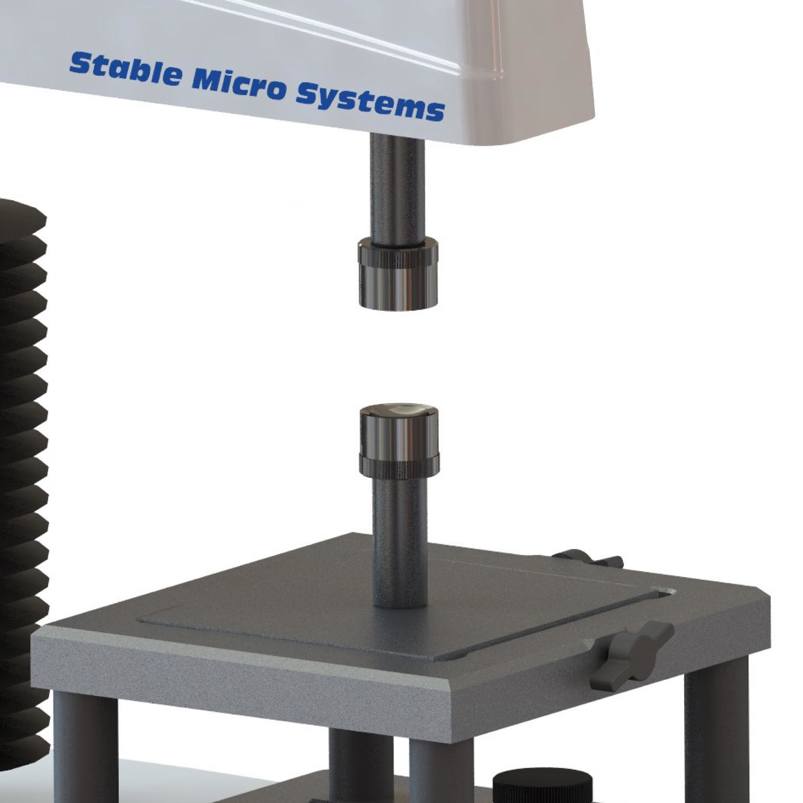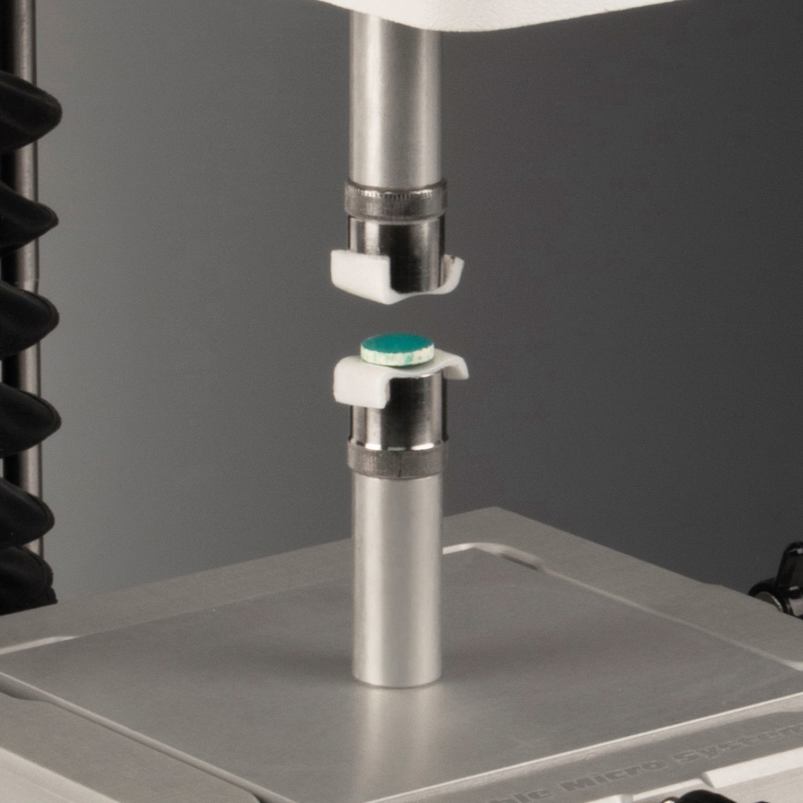Product overview
Solid inclusions in the form of aluminium lakes of water-soluble dyes, opacifiers (for example, titanium dioxide), and various inorganic materials are often added to tablet film coatings to improve their appearance (for example, colour and opacity), barrier properties, and in some cases their film-forming characteristics. Defects such as cracking and edge splitting and peeling can be a consequence of change of materials and can have a profound effect on the release of an active ingredient, especially if the tablet has been coated with an enteroinsoluble or sustained-release film.This test provides a quantitative measure of the adhesion strength of the coating to the tablet surface. Such a test is useful for studying the consequences of changes in tablet coating formulation variables.
This attachment performs an important task in ensuring that changes to the composition of coatings do not adversely affect the efficacy of the medication.The use of the Tablet Coating Adhesion Rig allows a sample to be supported, in cavities of definable dimensions, and held down whilst an adhesive test is performed. This attachment comprises an upper and lower attachment. The lower attachment is secured in the holed plate of the Heavy Duty Platform and the upper attachment is connected directly to the Load Cell. The tablet coating is carefully removed from around the circumference of each tablet, using a scalpel. Both attachment cavities (upper and lower) are covered with double-sided adhesive foam tape. This tape is pushed firmly into each cavity (before removal of the exposed surface backing). The tape backing is removed and the prepared tablet is then positioned centrally in the lower cavity and the test is commenced.
During the test, the upper attachment comes down onto the tablet with a specific force for a specific time, both of which are suitable to achieve good contact between the tablet surface and attachment cavity and sufficient to compress the tablet into both cavities to receive full coating contact with the foam tape. The upper attachment is then withdrawn quickly, either removing the upper coating or leaving the lower coating in the stationary attachment. The maximum force required to separate the tablet from its coating is taken as the ‘tablet coating adhesion force’.
How does the Tablet Coating Adhesion Rig work?
Typical graph

Technical information
Ideal sample form
Solid samples such as tablets that can be supported on a lower attachment of complimentary contour to it.
Benefits and limitations
- Consistent force can be applied for attachment to the adhesive before removal
Installation
Full installation instructions are provided within the Education Zone of the latest Exponent/Connect software version and on the technical information sheet accompanying this product.
Chemical compatibility
Stable Micro Systems probes and attachments are commonly made from four materials: anodised aluminium (AA6082 T6), stainless steel (316 T), Delrin (acetyl copolymer) and Perspex (polycarbonate).
In general use, probes and attachments made from these materials will be suitable for testing food products and inert non-food materials.
The four materials listed above are not universally resistant to all types of chemicals and as such the compatibility of the probe/attachment material with the product (to be tested) must be established to prevent damage to the probes and attachments. If the compatibility of the product with the probe is unknown to the customer then the chemical information about the product (Material Safety Data Sheet or Product Data Sheet) should be submitted to Stable Micro Systems. Stable Micro Systems will then assess the suitability of the probe/attachment material for use with the product and advise accordingly. If this advice is not sought then Stable Micro Systems will not accept liability for probes/attachments damaged by chemical attack from the product being tested.
Cleaning and maintenance
All probes and attachments may be cleaned in warm (or hand hot) water using a mild detergent. A soft brush may be used but abrasive cleaning aids should be avoided. Stable Micro Systems products should not be microwaved or cleaned in a dishwasher.
Screw threads should be lightly lubricated after drying using a light lubricant, e.g. petroleum jelly, mineral oil. This will aid the fitting and unscrewing of the item. Each component of a probe or attachment should be wrapped separately when stored, to avoid scratching or chipping. This will safeguard against any unnecessary damage to the accessory.


